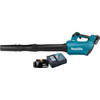
What does a neutral density filter do and how do you use it?
What's a neutral density filter and what does it do?

A neutral density filter, also called an ND filter, is a lens filter that blocks light. This filter is made of dark glass. When you attach it to the lens, less light falls onto the image sensor of your camera. Thanks to this, your images won't be overexposed soon. This is especially useful when you use a lower shutter speed or want to use a larger aperture. A lens filter allows you to take a nice photo in this cases.
When do you use a neutral density filter?

You've probably seen photos on which flowing water is covered with a soft haze. Chances are that the photographer used a neutral density filter. If you want to get this effect, you need to use a slower shutter speed. But if you do this with daylight, your photo will often be overexposed. A neutral density filter blocks the light, so you can still use a longer shutter speed during the day. Even for creating a subtle depth of field with a larger aperture, a neutral density filter helps you to avoid overexposure. This is useful for portrait photography, for example.
What to keep in mind?

There are different types of neutral density filters. You can choose between neutral density filters with a fixed intensity and filters with an adjustable intensity. If you choose the first type, you'll have to determine which intensity you need in advance. With a variable neutral density filter, the filter has multiple settings. By rotating the filter, you'll make glass darker or lighter. Keep in mind that when you close it all the way, black spots may appear in the image.








